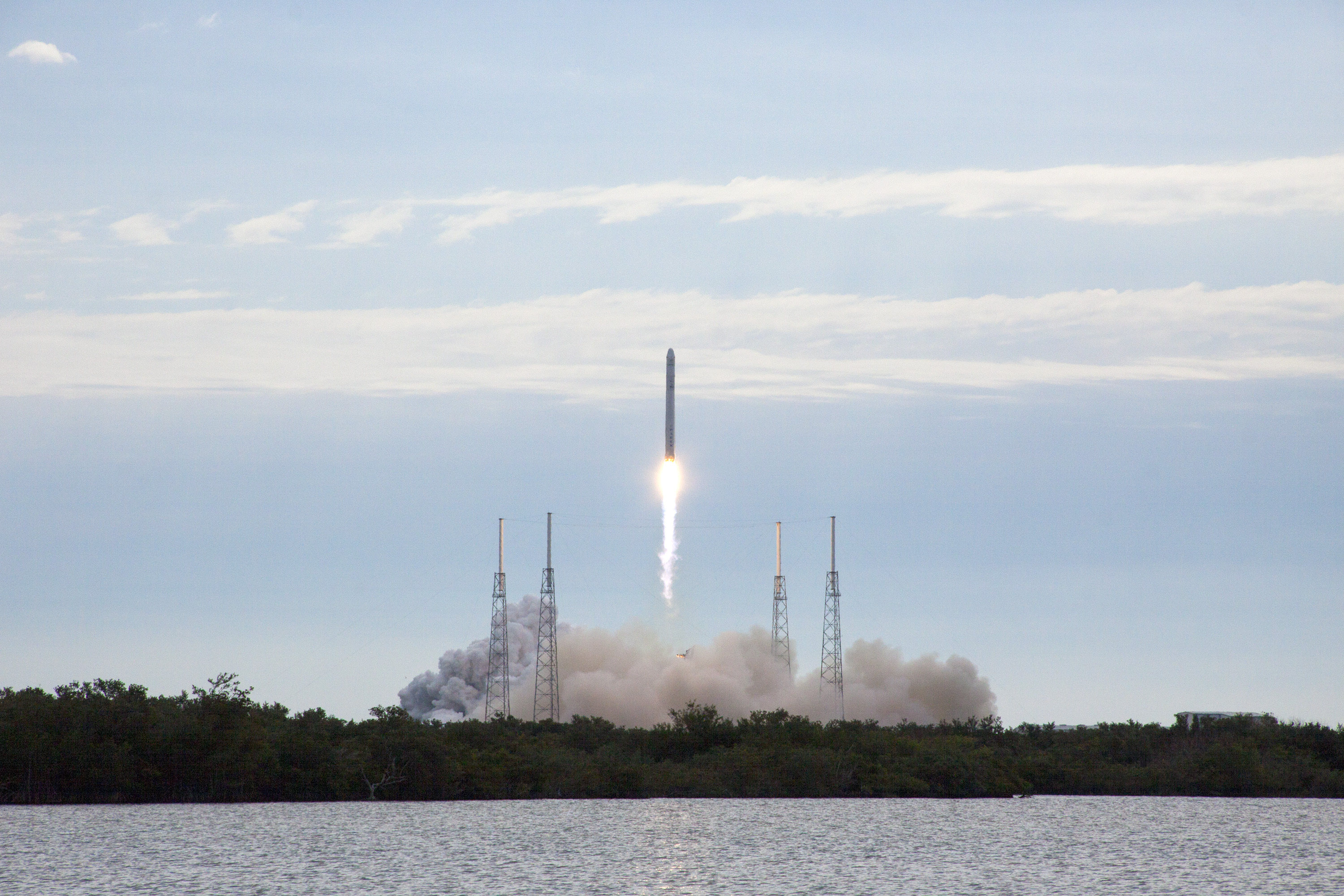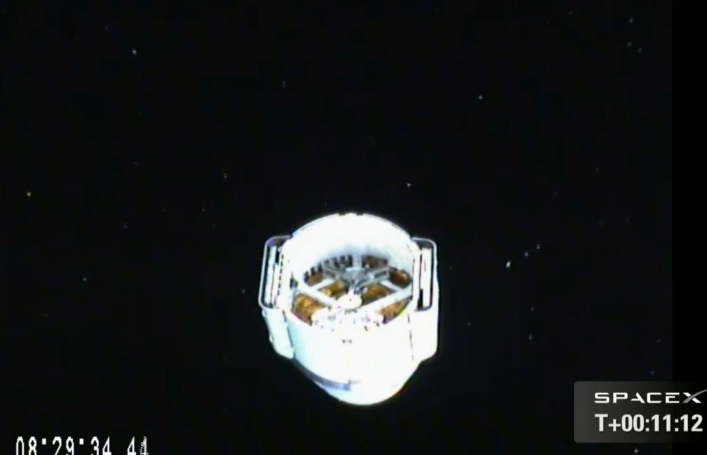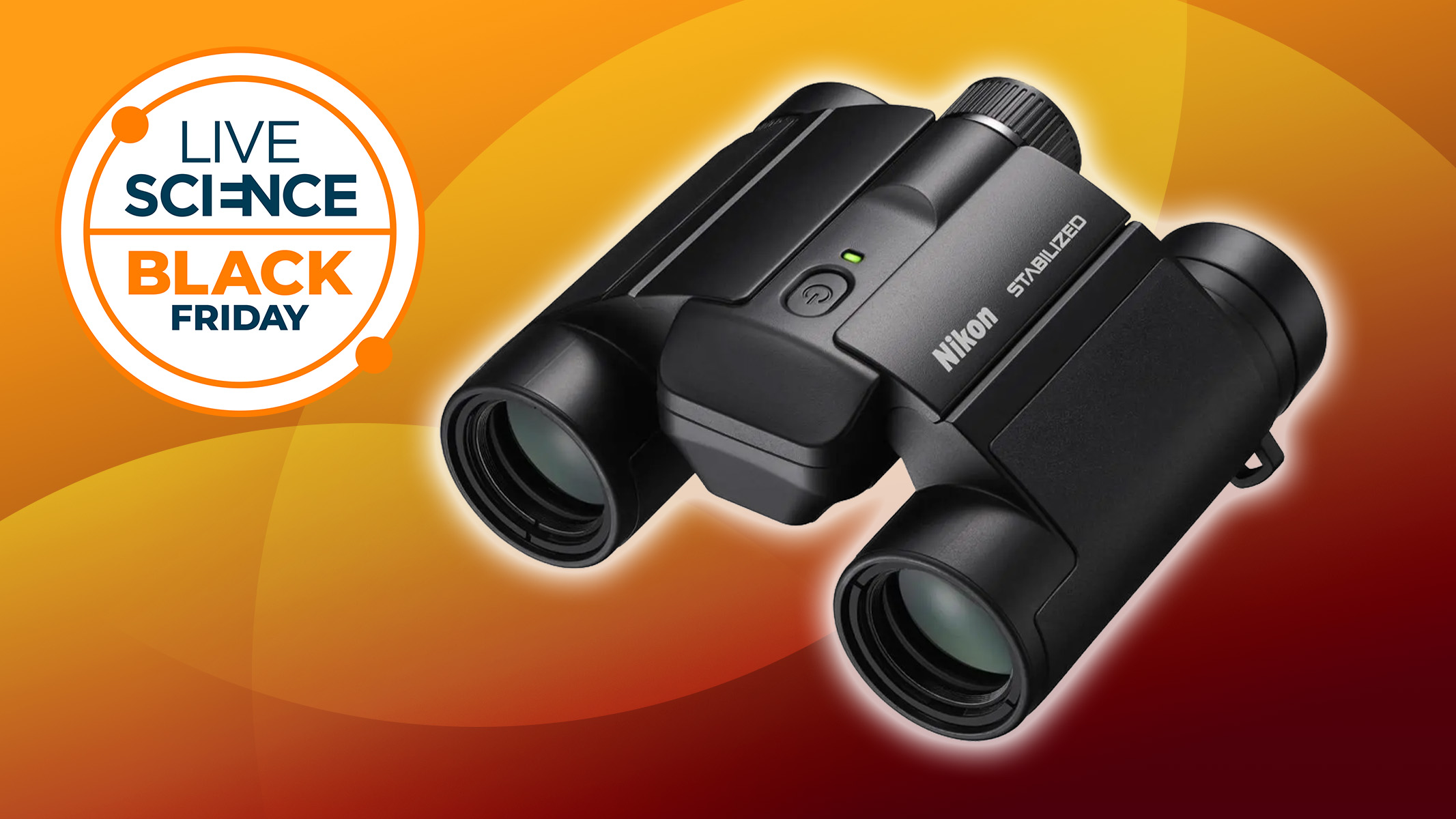SpaceX Dragon Capsule Problem Stalls Space Station Cargo Delivery

A thruster problem on the robotic Dragon space capsule launched by the private spaceflight company SpaceX on Friday (March 1) has engineers scrambling to identify the cause, forcing a delay in the spacecraft's arrival at the International Space Station by at least a day.
SpaceX and NASA officials say the thruster glitch, which occurred after the Dragon spacecraft's launch atop a Falcon 9 rocket today, prevented the spacecraft from performing vital maneuvers to put it on course for the International Space Station. The spacecraft is hauling nearly a ton of cargo and support equipment to the space station for NASA.
The Falcon 9 rocket launched on time at 10:10 a.m. ET (1510 GMT) from Cape Canaveral Air Force Station, but once the Dragon capsule separated from the booster, the problem became apparent.
Three of the four thruster pods on the Dragon space capsule required to propel the spacecraft to the space station did not activate properly after today's launch, according to officials at SpaceX. An issue with one of the capsule's propellant valves caused the thrusters to malfunction before the solar arrays — the pieces of machinery responsible for powering Dragon to the station — could deploy. [Photos: SpaceX's Dragon Launch to Space Station]
Friday afternoon, SpaceX founder Elon Musk announced that after some troubleshooting, ground controllers were able to activate one of the inactive thruster pods.
"Pods 1 and 4 now online and thrusters engaged," Musk wrote in a Twitter post. "Dragon transitioned from free drift to active control. Yes!!"
Engineers on the ground decided to extend the two solar arrays in spite of the less-than-ideal conditions. The solar panels were deployed when the capsule was upside down, preventing them from performing their intended function, according to press reports.
Get the world’s most fascinating discoveries delivered straight to your inbox.
According to NASA officials, three thrusters need to be in working order before the craft can dock with the space station. Two will get the capsule within the vicinity of the orbiting science laboratory, but unless three thrusters are proved to be functioning, it cannot attach to the station.
This is the first time SpaceX has experienced problems with a Dragon spacecraft in orbit, but not the first glitch on a mission by the company.
During an October 2012 cargo launch to the International Space Station, one of the nine Merlin engines on the Falcon 9 rocket shut down during launch. The engine shutdown did not affect the delivery of Dragon to the station, but it did prevent the mission's secondary payload from being deployed in its proper orbit.
When Dragon returned to Earth three weeks after its flight in October, the capsule's freezers lost power. None of the experiments housed in the freezers were damaged, SpaceX officials say.
The launch today is the second of 12 flights to the space station planned for Dragon. SpaceX was awarded a $1.6 billion contract with NASA to fund these trips. Orbital Science Corp., another private spaceflight organization, was contracted for nine supply trips to the station as well.
This story was provided by SPACE.com, sister site to LiveScience. You can follow SPACE.com staff writer Miriam Kramer on Twitter @mirikramer. Follow SPACE.com on Twitter @Spacedotcom. We're also on Facebook & Google+. This article was first published on SPACE.com.



